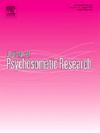Telehealth provision of Retraining and Control Therapy (ReACT) on cognitive and biopsychosocial functioning in pediatric functional neurological disorder
IF 3.3
2区 医学
Q2 PSYCHIATRY
引用次数: 0
Abstract
Introduction
Retraining and Control Therapy (ReACT) has been shown to improve functional seizure (FS) frequency. This prospective observational study evaluated the effects of ReACT on mixed functional neurological disorder (FND) symptoms and the maintenance of outcomes 6-months post-treatment. We hypothesized that all mixed FND symptoms and other biopsychosocial outcomes would improve following ReACT.
Methods
Adolescents ages 11–18 with FS completed one in-person and 11 telehealth ReACT sessions. Participants self-reported FS frequency for 30-days pre-treatment, 30-days post-treatment, and 30-days at 6-months post-treatment. Cognitive performance was assessed at baseline and 1-week post-treatment. Other biopsychosocial assessments and FND symptoms were self-reported at baseline, 1-week post-treatment, and 6-months post-treatment. Descriptive statistics assessed changes in FND symptoms. Paired-samples t-tests and ANOVAs assessed changes in cognitive and biopsychosocial outcomes.
Results
The final sample included 34 consecutively enrolled adolescents (82.4 % Female sex; 70.6 % White; Mage = 15.4, SD = 1.9) who completed 12 sessions of ReACT and 1-week post-treatment assessments. Twenty-eight adolescents completed 6-months post-treatment assessments. At 30-days and 6-months post-treatment, 94 % and 87 % of adolescents reported ≥50 % reduction in FS, respectively, and 62 % and 61 % reported FS freedom, respectively. At 1-week post-treatment, 60 %, 60 %, and 80 % of adolescents who previously reported positive motor (excluding FS), negative motor, or psychological/cognitive FND symptoms, respectively, reported symptom freedom. By 6-months post-treatment, these percentages were 75 %, 70 %, and 100 %. Biopsychosocial outcomes improved and were maintained or continued to improve at 6-months post-treatment.
Conclusion
At 6-months post-ReACT, adolescents with FND experienced broad functional and biopsychosocial improvements. Telehealth provision demonstrates the potential to expand treatment access.
远程医疗提供再培训和控制治疗(ReACT)对儿童功能性神经障碍的认知和生物心理社会功能的影响
再训练和控制疗法(ReACT)已被证明可以改善功能性癫痫发作(FS)的频率。这项前瞻性观察性研究评估了ReACT对混合功能神经障碍(FND)症状的影响以及治疗后6个月结局的维持情况。我们假设所有混合FND症状和其他生物心理社会结果在反应后都会得到改善。方法11 - 18岁的FS青少年完成1次面对面和11次远程医疗ReACT会话。受试者自我报告治疗前30天、治疗后30天和治疗后6个月30天的FS频率。在基线和治疗后1周评估认知表现。其他生物心理社会评估和FND症状在基线、治疗后1周和治疗后6个月自我报告。描述性统计评估FND症状的变化。配对样本t检验和方差分析评估了认知和生物心理社会结果的变化。结果最终样本包括34名连续入组的青少年(82.4%为女性;白色占70.6%;Mage = 15.4, SD = 1.9),他们完成了12个疗程的ReACT和1周的治疗后评估。28名青少年完成了治疗后6个月的评估。在治疗后30天和6个月,94%和87%的青少年分别报告FS减少≥50%,62%和61%的青少年分别报告FS自由。在治疗后1周,60%、60%和80%先前报告阳性运动(不包括FS)、阴性运动或心理/认知FND症状的青少年分别报告症状自由。治疗后6个月,这些百分比分别为75%、70%和100%。治疗后6个月,生物、心理、社会结果得到改善,并维持或继续改善。结论在反应后6个月,FND青少年的功能和生物心理社会得到了广泛的改善。提供远程保健显示了扩大治疗机会的潜力。
本文章由计算机程序翻译,如有差异,请以英文原文为准。
求助全文
约1分钟内获得全文
求助全文
来源期刊
CiteScore
7.40
自引率
6.40%
发文量
314
审稿时长
6.2 weeks
期刊介绍:
The Journal of Psychosomatic Research is a multidisciplinary research journal covering all aspects of the relationships between psychology and medicine. The scope is broad and ranges from basic human biological and psychological research to evaluations of treatment and services. Papers will normally be concerned with illness or patients rather than studies of healthy populations. Studies concerning special populations, such as the elderly and children and adolescents, are welcome. In addition to peer-reviewed original papers, the journal publishes editorials, reviews, and other papers related to the journal''s aims.

 求助内容:
求助内容: 应助结果提醒方式:
应助结果提醒方式:


